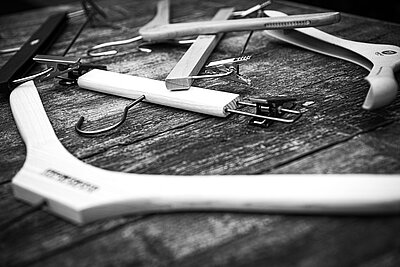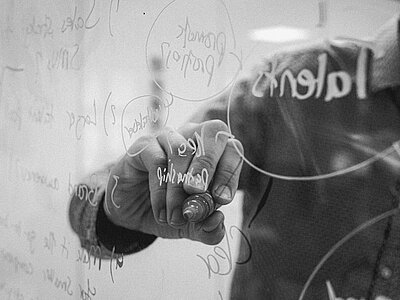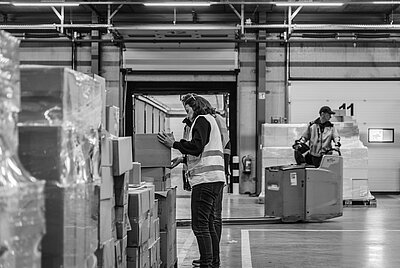Footfall
For most brick and mortar stores, the window display was the traditional place for customers to start their journey. Visual merchandising plays a key role in setting the tone for the target audience and is a key influence in attracting a shopper to stop, reflect and enter the store. However, recent research points to customers doing more research online and then visiting the store as the final point of purchase. While many survey respondents were unsure about their future shopping habits, 48% said they are more likely to browse online and purchase in-store.
In recent months, consumers have spent a record amount of time online and e-commerce sales have spiked. Bazaarvoice has conducted an international trends study with over 140 brands and retailers in North America, Europe and surveyed its network of more than 6,200 brands and retailer sites and predicts that this online interest will remain high as we head into the second half of 2020. Its research showed that 85% of retailers believe online sales will increase this season compared to last, with 61% expecting higher engagement and/or purchasing through social media channels. Over half of brands and retailers asked are investing more in ecommerce website upgrades.
etailers need to ensure their online marketing acts as their new shop window, while still maintaining a visual attraction to entice shoppers in the door. For those consumers that are brave enough to venture out and about, never has it been more important for window displays and store fronts to grab attention to encourage footfall. Shop window displays need to focus on eye-catching products and offers and retailers need to demonstrate they understand what customers want and that they can deliver an online/ in-store experience that has synergy.
Store flow
Customers want to feel safe as they enter stores, and this is where technology can help. Shopper count software has been used by retailers for years to manage store flow and count the number of heads entering a shop. It is now being modified by suppliers to help manage and control the number of shoppers entering a premise, helping retailers manage the new social distancing guidelines.
The technology works on a traffic light system, where ‘red’ is too busy and ‘green’ is acceptable capacity, and it can be managed at a site-specific level. The technology can even automatically open and close doors to keep visitor numbers under specific thresholds. It can also be used to power signage to communicate levels of occupancy at any given moment to customers if necessary.
Another option would be a similar system online, with a traffic light system to show online shoppers when the busier times in store are. This would enable those who want to take their time and browse to choose a time that had less shoppers and would enable click and collect options to be even more efficient.
Store architecture
Many retailers have modified their stores to enable a clear and easy flow around their shops. Working with one-way systems, many stores have invested in new store architecture to help both retailers and consumers alike.
But retailers need to understand their customer base and offer what they want, both in product choice and the in-store experience. If consumers want a less elaborate experience in the short-term and instead want enhanced safety around them, retailers need to keep up. Collecting data about footfall and the general sense of how consumers feel in-store is vital for getting this right. The best data may be collected at the local store level by your own staff. Listening and talking to customers is crucial in getting this right.
Knowing your customers’ needs and offering what they want is key to encourage them back in store. As the FT reported recently, the British design Paul Smith has reopened four of his five shops in France. While footfall is down 70 per cent at those stores, sales levels have already returned to 2019 levels and Paul believes that there will always be demand for a well-made suit. He said: “That has nothing to do with modern technology, and everything to do with talking to people. Quite a lot of people who enjoy clothes will want to dress up again.”
There has been much discussion over the years about showrooming - showing a product off in a few of sizes and colours so that customers can order it and have their size and choice delivered to their home. With the current situation, and the reduction of space in stores as more room is needed for safety and social distancing, showrooming may become more common.
Omnichannel
Prior to COVID, research was already backing the move towards online and offline integration. In a recent survey by market research company Global Web Index, data showed that online shoppers would be encouraged to shop in-store for a number of reasons, such as if they were able to order out-of-stock merchandise for delivery (26%) or pay without waiting in a queue (30%).
Once the safety issues have been nailed, there is still going to be a call for an inclusive in-store experience that focuses on customer experience rather than just transactions. Retailers are being challenged on how to integrate the experience into their stores – whether through the use of immersive technology, smart mirrors, personal shopping or practical elements like a café or click and collect bays – anything that will transform the experience, not only to drive traffic but also to keep consumers engaged for longer.
Clever displays that give a wow factor and that tie in with online campaigns are all perched to become the next big thing for retailers. The effect this has will vary, depending on the type of retailer. For instance, the research also highlighted that for almost a quarter of in-store fashion buyers, the experience was the key reason for shopping in-store.
There is no ignoring that when stores get omnichannel right and pair it with back of shop efficiencies, there are huge gains to be made. In a recent report by Forrester which surveyed six multichannel retailers that operate both omnichannel stores and provide ‘buy online, pick up in-store’ services in Singapore, sporting goods giant Decathlon stole the show.
As reported in The Drum, it is a great example of a brand using omnichannel and digital, retail store capabilities by equipping its stores with automated inventory management tools such as RFID tags and a dedicated service counter to deliver efficient in-store click and collect. It also provides cross-store inventory visibility for staff and customers and has an option for customers to self-checkout with in-aisle kiosks.
David Mines, Business Development Director at Worldpack, says: “Omnichannel allows brands to merge digital and physical engagements so their customers can buy into the brand regardless of their location; at home or on the high street. Instead of stores and digital being set up to compete with each other, an omnichannel approach enables these two channels to work together to maximise customer experience and drive sales.”
The main question for now is whether customers are ready for safety measures and social distancing to be pushed to their limits for a more interactive experience to be on offer or whether they are still taking baby steps. The next few months are going to be interesting times.
To find out more about how Worldpack can help you with your future retail support needs, contact us on +31(0) 88 494 20 80, email us at online@worldpack.eu


